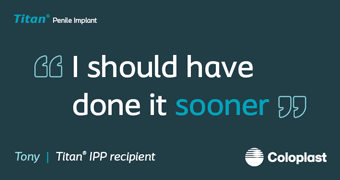Treating Low Testosterone
Introduction
What are the potential benefits of testosterone treatment?
Most studies of testosterone therapy have demonstrated an improvement in libido and sexual function in men with hypogonadism, or low levels of male hormones. Researchers have found that therapy increased sexual interest and increased the number of spontaneous erections. However, testosterone replacement may not improve erectile dysfunction if there are other causes of the condition.
In addition to its effect on sexual domains, testosterone replacement has been shown to benefit mood, reducing symptoms of depression, anger, fatigue and confusion. Other research suggests that treatment may have beneficial effects on bone mineral density. Further studies in these areas are needed.
In the U.S., several forms of testosterone replacement are approved for use. These include long- and short-acting injections, oral agents, patches and gels. Interest in these products has risen dramatically in the last decade or so.
Medication
Are there testosterone pills available?
Testosterone pills are available, but physicians generally do not recommend them. In this form, testosterone is metabolized quickly and cannot achieve sufficient blood levels to be useful. The use of testosterone in this form has been associated with dangerous side effects in the liver, including benign and malignant tumors.
Reformulation of testosterone undecanoate, an oral testosterone therapy used in Europe that is not associated with significant liver toxicity, is being tested in the United States.
How do testosterone gels and patches work?
Testosterone patches are a useful alternative to injections because of their convenience, ease of use and maintenance of normal testosterone levels, despite their higher cost. There are two types of transdermal (through the skin) delivery systems: a patch applied to the skin or the scrotum and a gel that is rubbed into the skin. These methods provide continuous delivery of testosterone after it is absorbed into the skin, which acts as a reservoir for the sustained release of testosterone into the bloodstream.
The skin patch Androderm® is applied daily in the evening to the back, abdomen, upper arms or thighs. It results in normal serum testosterone levels, mimicking the natural diurnal pattern of testosterone (highest levels in the morning and lower levels in the evening).
Scrotal skin absorbs testosterone better than non-scrotal skin. Testoderm®, a non-adhesive patch, is applied each morning after a dry shave to the scrotum. Testosterone levels mimic the natural diurnal pattern.
AndroGel® and Testim® are testosterone gel preparations applied once-daily to the shoulders, upper arms and/or abdomen. Blood levels of testosterone seem to be constant over 24 hours. To minimize the potential to transfer testosterone, hands should be washed immediately, and it is recommended that patients shower before intimate contact or wear a shirt to cover the application site.
How often should men using gels or patches have their blood tested?
The American Association of Clinical Endocrinologists recommends that patients receiving testosterone replacement be monitored every 3-4 months during the first year of treatment. Physicians may also suggest an initial follow-up visit after one or two months is encouraged to assess how treatment is working and to determine if a higher or lower dose is needed as well as yearly follow-up.
The optimal time of day for measuring testosterone levels varies by delivery system. Peak serum testosterone occurs approximately four to eight hours after patch application. Since testosterone levels remain fairly constant with the gel formulation, the timing of measurement is not critical.
Men undergoing testosterone replacement should also have the following assessments performed at baseline and periodically during follow up exams:
• PSA (prostate-specific antigen) and digital rectal exam - to monitor the effect of treatment on the prostate
• Hematocrit and hemoglobin levels - to measure the amount of red blood cells.
Side Effects
What are the side effects of testosterone use?
Testosterone replacement is generally well tolerated. The most common adverse events associated with treatment include:
• Skin itching or irritation from the patch application; this is less common with the gel preparation.
• breast tenderness, swelling or the development of prominent breast tissue, a condition known as gynecomastia.
• Acne, oily skin, increased body hair and flushing have also been observed.
Testosterone replacement has also been associated with exacerbation or development of sleep apnea. Additionally, these treatments tend to reduce sperm counts and testicular size, and should not be used in men concerned about fertility.
Treating Low Testosterone
Return to “General Discussion”
Who is online
Users browsing this forum: ClaudeBot and 3 guests






